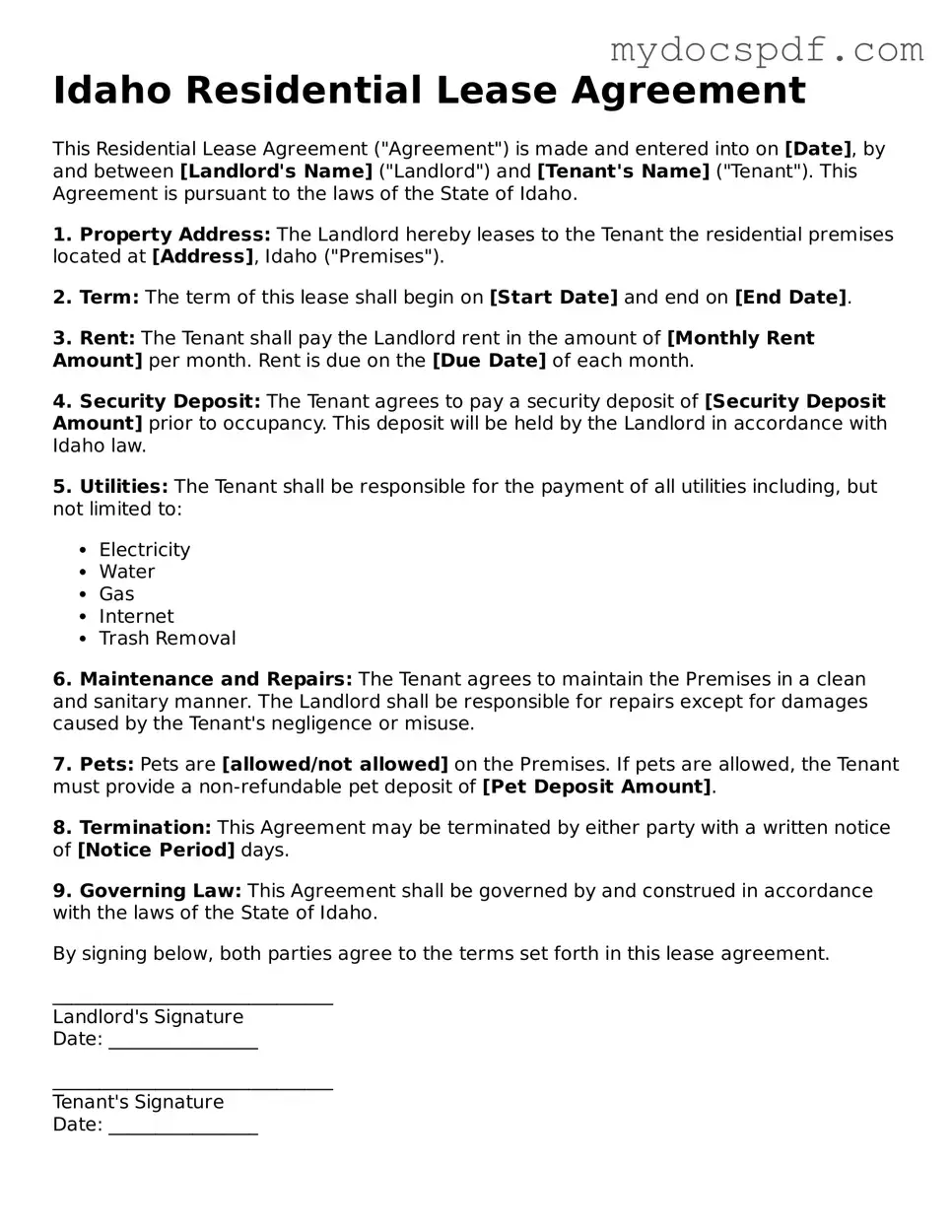Idaho Residential Lease Agreement
This Residential Lease Agreement ("Agreement") is made and entered into on [Date], by and between [Landlord's Name] ("Landlord") and [Tenant's Name] ("Tenant"). This Agreement is pursuant to the laws of the State of Idaho.
1. Property Address: The Landlord hereby leases to the Tenant the residential premises located at [Address], Idaho ("Premises").
2. Term: The term of this lease shall begin on [Start Date] and end on [End Date].
3. Rent: The Tenant shall pay the Landlord rent in the amount of [Monthly Rent Amount] per month. Rent is due on the [Due Date] of each month.
4. Security Deposit: The Tenant agrees to pay a security deposit of [Security Deposit Amount] prior to occupancy. This deposit will be held by the Landlord in accordance with Idaho law.
5. Utilities: The Tenant shall be responsible for the payment of all utilities including, but not limited to:
- Electricity
- Water
- Gas
- Internet
- Trash Removal
6. Maintenance and Repairs: The Tenant agrees to maintain the Premises in a clean and sanitary manner. The Landlord shall be responsible for repairs except for damages caused by the Tenant's negligence or misuse.
7. Pets: Pets are [allowed/not allowed] on the Premises. If pets are allowed, the Tenant must provide a non-refundable pet deposit of [Pet Deposit Amount].
8. Termination: This Agreement may be terminated by either party with a written notice of [Notice Period] days.
9. Governing Law: This Agreement shall be governed by and construed in accordance with the laws of the State of Idaho.
By signing below, both parties agree to the terms set forth in this lease agreement.
______________________________
Landlord's Signature
Date: ________________
______________________________
Tenant's Signature
Date: ________________
